Canada Is Feeling More Optimistic, But Still Divided
The latest Abacus Data poll on Canadian politics and government
There’s something unusual in the data this month. For the first time in over three years, more Canadians are saying the country is on the right track. It’s not a tidal wave of optimism, only four in ten feel this way, but it’s a notable shift, and the highest score we’ve seen since early 2022.
This subtle rise in national confidence comes just as Parliament breaks for the summer and Canadians shift their attention to barbecues, beach days, and travel. The country’s political temperature has cooled, for now, and our latest Abacus Data survey offers a snapshot of a public that’s quietly hopeful, even if it remains deeply divided.
A Summer Thaw in Mood
Compared to even a few months ago, Canadians seem less despondent. The percentage of people who think the country is headed in the wrong direction is still higher than those who feel good about it (44% vs. 40%), but the gap is narrowing. That optimism is especially strong among older Canadians, men, and Atlantic Canadians, but even in Alberta, where federal Liberals usually struggle, there are signs of softening resistance.
What’s remarkable isn’t just the shift in mood, it’s the fact that this optimism hasn’t spilled over into how Canadians view the world. Only 14% think the world is moving in a positive direction. Even fewer say that about the United States. While we’re feeling better about ourselves, the rest of the planet still feels like a dumpster fire.
Trump, Tariffs, and a World on Edge
When we asked Canadians what was keeping them up at night over the Canada Day weekend, the most common answers weren’t domestic—they were global. “Trump,” “war,” “Iran,” and “tariffs” rose to the top of the list. That tells us that Canadians are still grappling with macro-level anxieties, from the return of Trumpism in the U.S. to fears of war and economic volatility.
At the same time, the cost of living remains the top domestic issue by a long shot. Nearly six in ten (59%) say it’s the most important challenge facing the country, followed by the U.S. political situation, the economy, housing, and healthcare. But dig a little deeper, and the political divides become clearer.
The Issues That Split Us
Among Liberal supporters, Donald Trump ranks just behind affordability as a top concern. Conservatives, on the other hand, are far more likely to emphasize the economy, immigration, and the cost of living. The climate change gap is especially stark: 18% of Liberals say it’s a top issue, compared to just 4% of Conservatives.
Generational divides matter too. Younger Canadians are disproportionately worried about housing, job security, and inequality. Older voters are more focused on healthcare and Trump. These are not just different priorities, they’re fundamentally different ways of seeing the world.
Carney’s Steady Hand
The Prime Minister remains in a strong position. Mark Carney’s government continues to earn majority approval, with 52% of Canadians saying they’re satisfied with the job he’s doing—nearly unchanged from our last wave. Since taking over in March, Carney has enjoyed a rare period of political goodwill. What’s even more surprising is how broad that support is: from Ontario to Atlantic Canada, and even in parts of the Prairies, a sizable share of the population thinks he’s doing well.
Carney’s personal numbers are similarly strong. Nationally, his net favourability stands at +21, with especially high ratings in Quebec and among Baby Boomers. His appeal isn’t universal, he’s underwater in Alberta and deeply disliked by Conservatives, but compared to what we’ve seen with Trudeau in the last years of leadership, Carney’s numbers are impressive.
Poilievre’s Dilemma
Pierre Poilievre’s image is a study in contrast. Among Conservatives, he’s adored. Among Liberals and New Democrats, he’s radioactive. While he maintains strong support in Alberta and the Prairies, his national net favourability is negative, and his numbers in Quebec and Atlantic Canada are particularly weak.
Younger Canadians are more open to him, which may give his party room to grow. But the ceiling is low unless he can win over voters outside his base. For now, the story of Poilievre’s leadership is one of deep polarization, energizing for his supporters, alienating to many others.
The Trump Effect
If there’s one figure that unites Canadians, it’s Donald Trump—in opposition. Just 13% of Canadians have a favourable view of the former U.S. president, while 76% view him negatively. His net score of –63 is worse than any federal leader’s by a country mile. Trump is not on the ballot here, but his presence in U.S. politics looms large, influencing how Canadians perceive both their own leaders and the broader political climate.
The Appetite for Change Has Eased
Perhaps the most consequential trend is the softening of the public’s desire for change. In December, 56% of Canadians said it was time to replace the Liberals. Today, that number has dropped to 39%. More people now say the Liberals deserve to be re-elected than at any point since 2023.
Carney hasn’t erased the desire for change, but he has muddied it. Many Canadians who wanted something different under Trudeau are now open to giving the new Liberal leader a shot, especially if the alternative feels unappealing.
The Vote Remains Tight
Despite all this, the race remains a dead heat: 41% say they’d vote Liberal, 40% Conservative. The fundamentals favour Carney, but goodwill hasn’t yet translated into vote switching. Conservatives remain motivated, and the Liberal coalition, while larger in theory, needs to prove it can show up on election day.
Looking at the data, we see familiar cleavages:
Women, older voters, and the university-educated lean Liberal
Men, younger voters, and those with less formal education lean Conservative
Regionally, the Liberals lead in Quebec and Atlantic Canada; the Conservatives dominate Alberta and the Prairies. Ontario and B.C. are toss-ups.
So What?
Canadians are feeling a little better about the country. The federal government is getting decent reviews. And Mark Carney is connecting with a broad swath of the electorate. But for now, none of it has broken the electoral stalemate.
The next few months will be critical. Can the Liberals translate optimism into momentum? Can the Conservatives find a message that broadens their base without alienating it? And will the NDP, stuck at 9%, find a way to matter again?
For now, Canadians seem content to let Carney govern. But contentment is not commitment. The summer may be calm, but the storm clouds of the next campaign are never far off.
You can get all the details of this new poll here.
Abacus Data turned 15 on Thursday. I wrote something about the milestone.





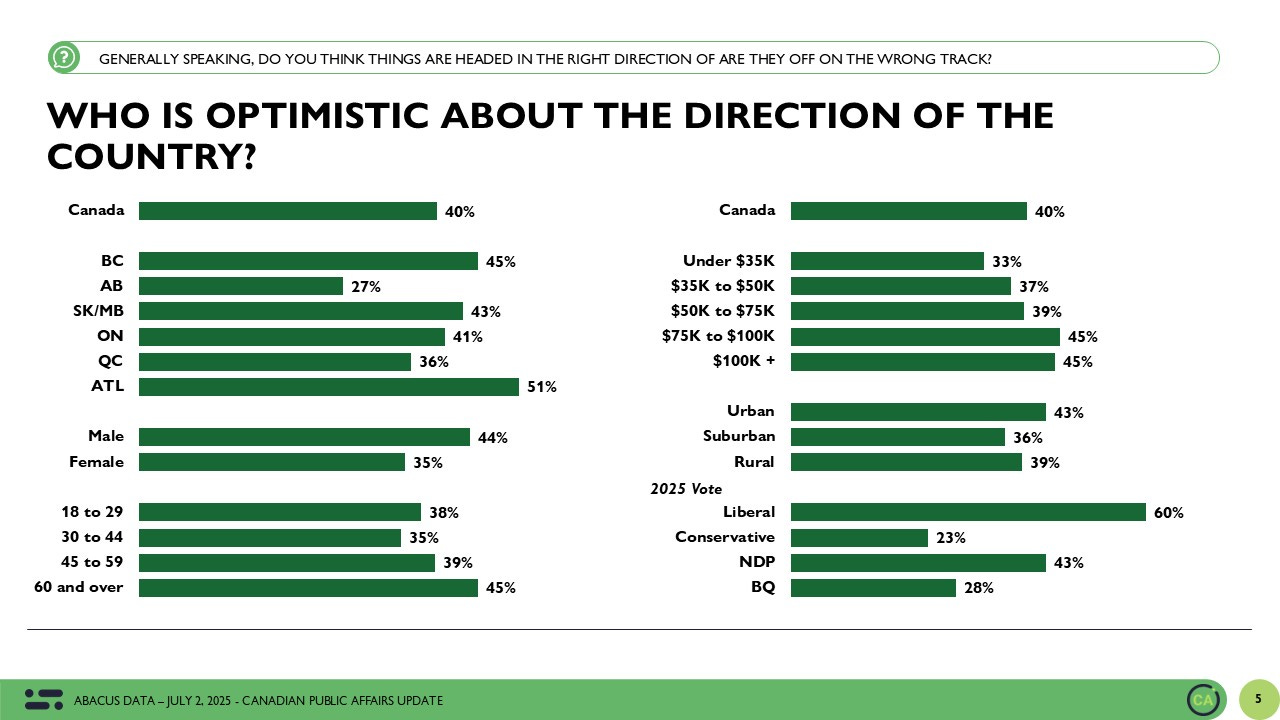


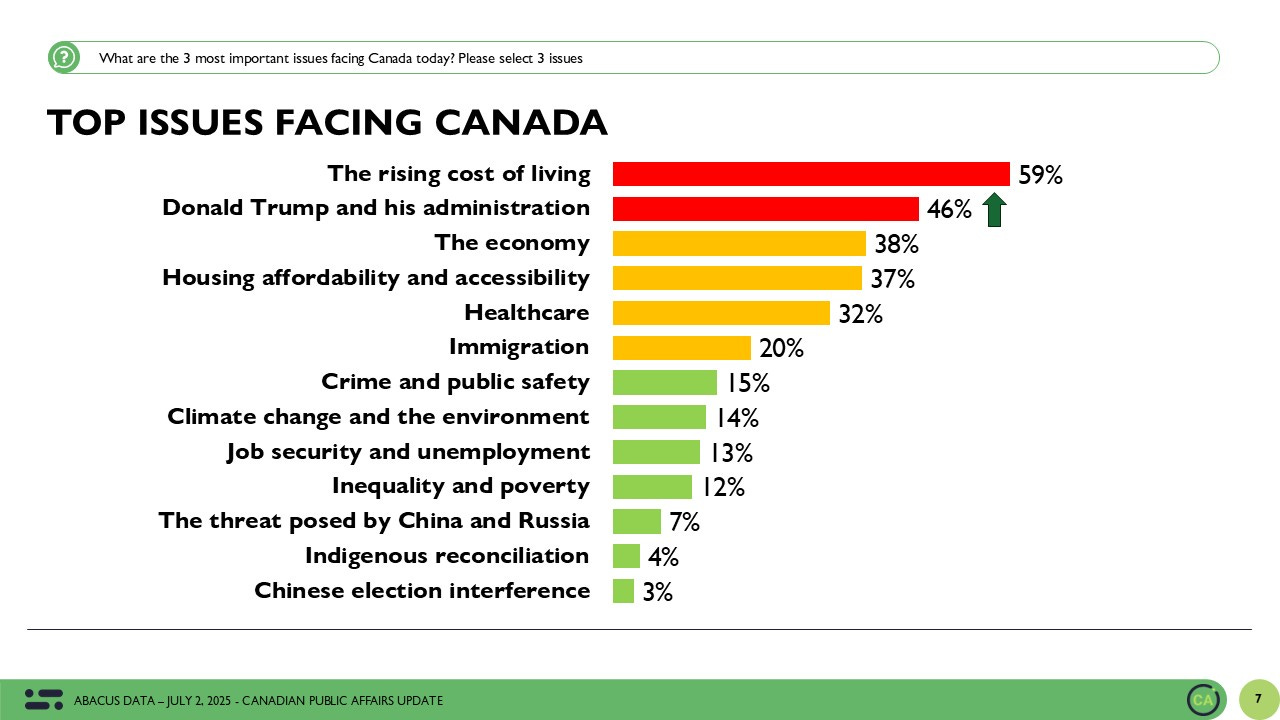
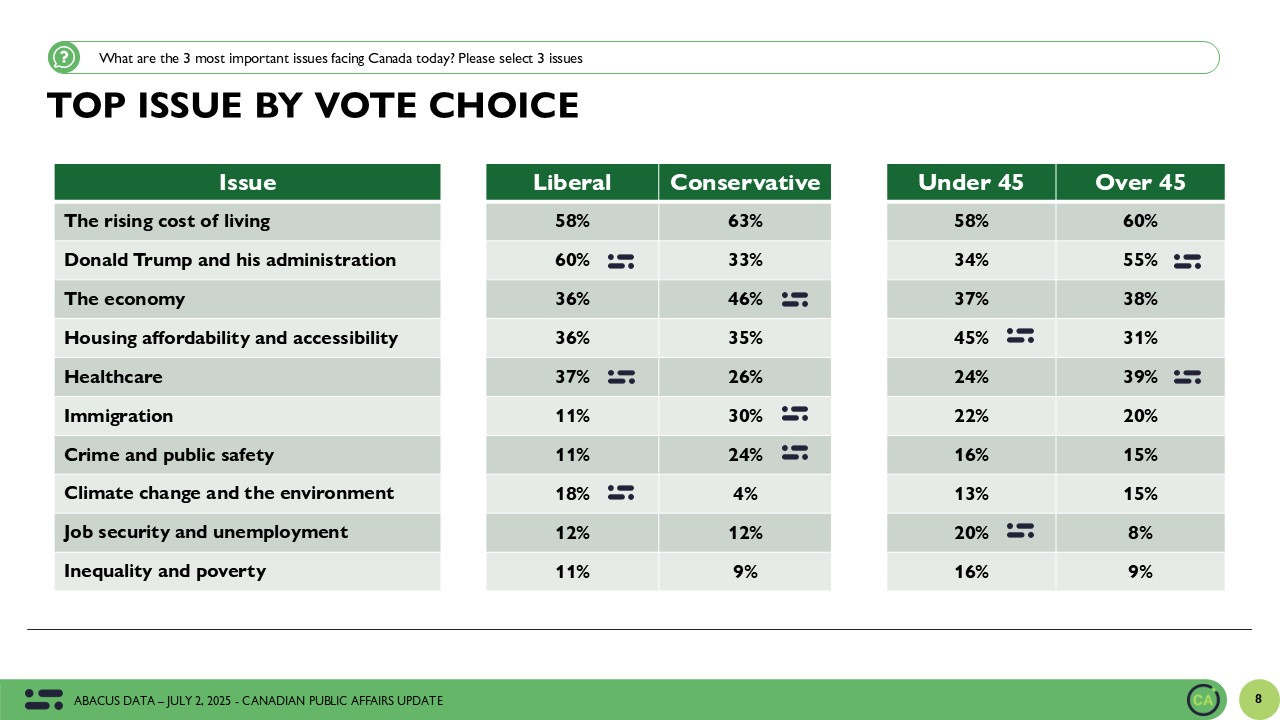
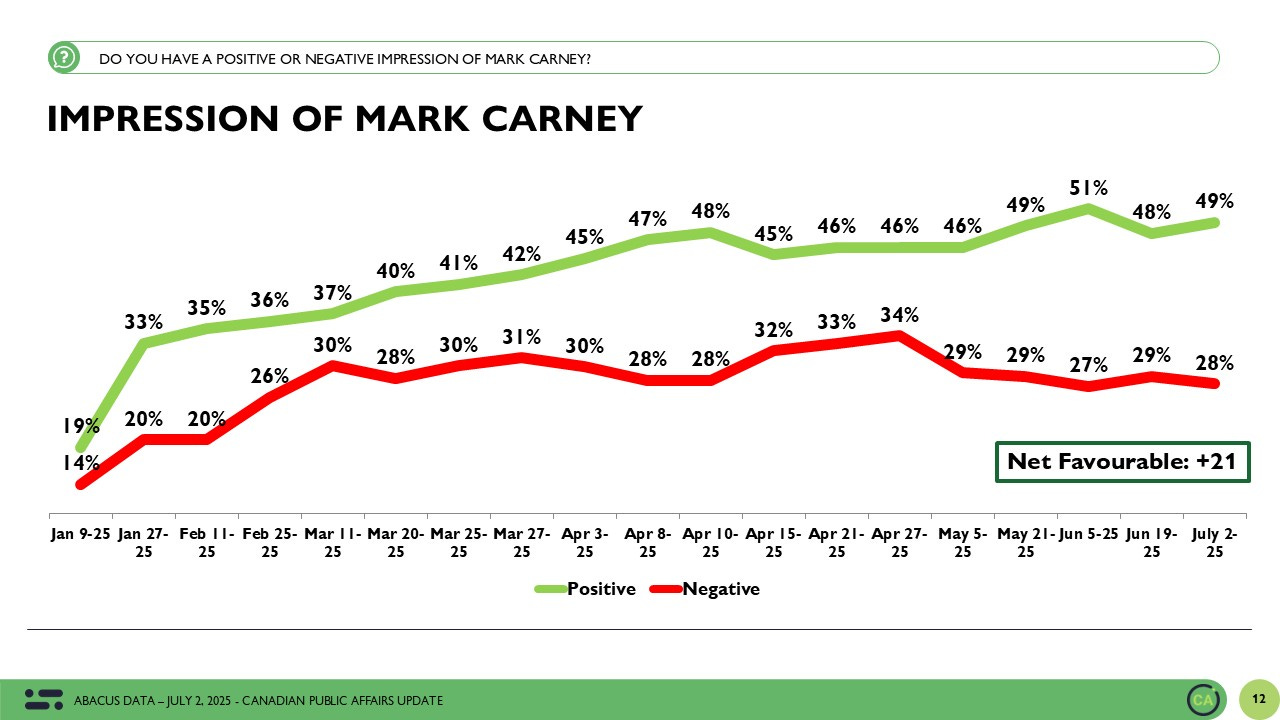


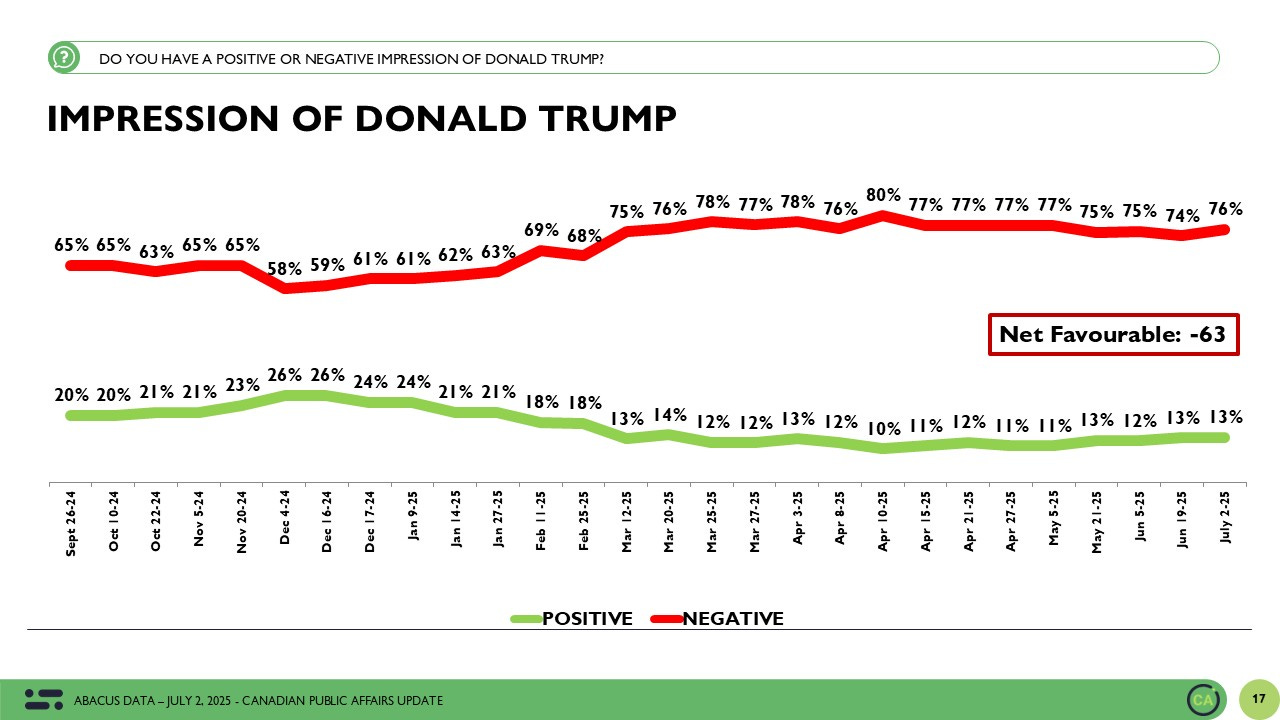


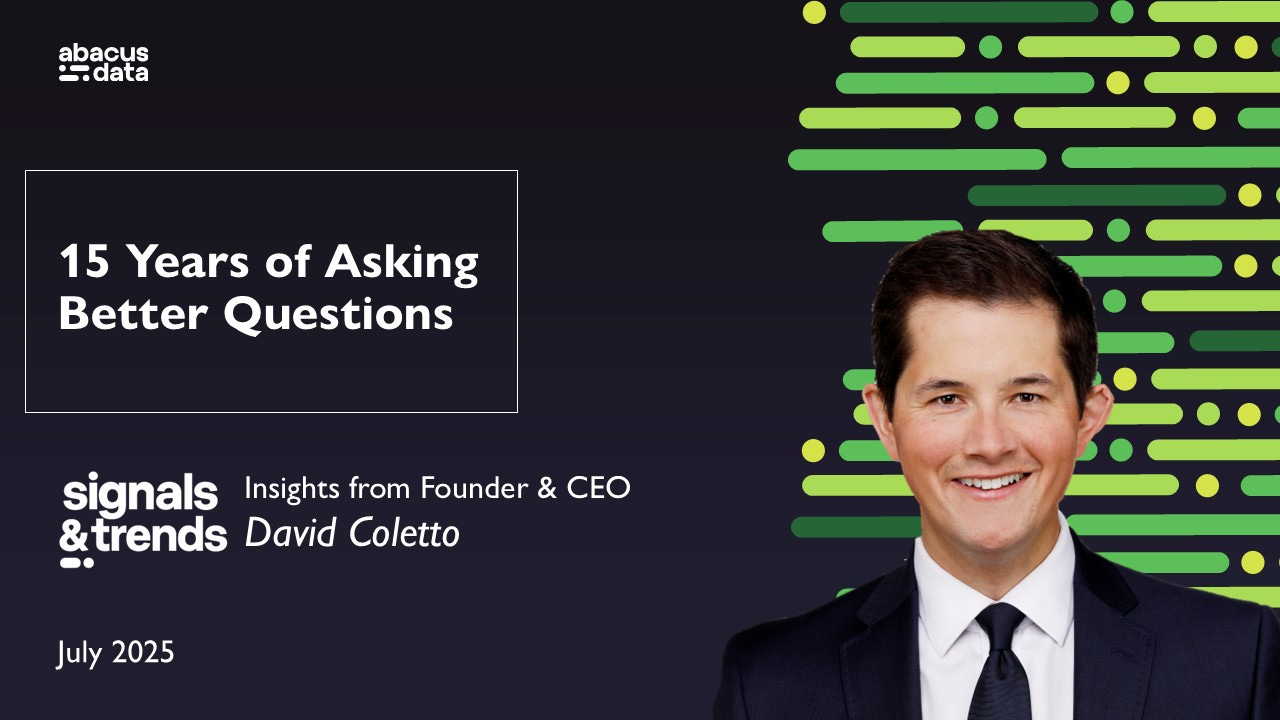
Strange? In my small world I have a mix of Liberals and Conservatives family and friends. The only difference I've noticed is the Liberals are getting a little tired of Carney with promises and no results. Just ever so slightly but still a bit different.